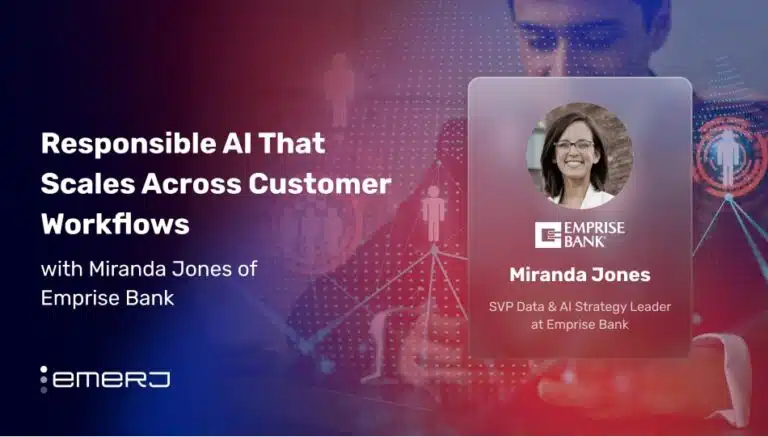Though in its nascency, the Indian banking sector is beginning to adopt artificial intelligence (AI). While large commercial and investment banks globally are incorporating AI and blockchain for both back-office and customer-facing purposes, in India, widespread adoption of these technologies has not yet come to fruition.
However, several large financial services companies and FinTechs have collaborated to conduct proof of concepts (POCs) and implement some of these emergent technologies into their operations, according to the PwC report. AI is viewed as one of the most exciting and profitable ventures in the FinTech space in India.
“The applications of AI and ML in data analytics and customer service create the opportunity for exponentially more personalized and faster customer experiences, significantly better insights, and, automation of back-end workflows,” the report stated. More than 36 percent of large financial institutions are already investing in these technologies, and almost 70 percent report that they are planning to in the near future.
In this article, we examine the AI applications in the top four Indian banks, which help answer the following questions:
- What AI applications are being used by customers and employees at leading Indian banks?
- What are the benefits of these AI applications in terms of reduction in cost, time and effort?
- What does the future hold for AI in the Indian banking sector?
Let’s explore the AI applications in use in the leading commercial banks in India: State Bank of India, HDFC, ICICI and Axis:

State Bank of India (SBI)

SBI, which is India’s largest public-sector bank with 420 million customers, is embarking on its AI journey from the point of view of both employees and customers. To fuel its AI mission, this year, SBI launched a national hackathon, “Code For Bank”, for developers, startups and students to come up with innovative ideas and solutions for the banking sector, focusing on technologies such as predictive analytics, fintech/blockchain, digital payments, IoT, AI, machine learning, BOTS and robotic process automation.
SBI is currently using an AI-based solution developed by Chapdex, the winning team from its first hackathon. Sudin Baraokar, SBI’s head of innovation, told Emerj.
“The solution essentially scans cameras installed in the branch and captures the facial expressions of the customers and immediately reports whether the customer is happy or sad … this is real-time or near real-time feedback.”
The bank will now build a dashboard that will gauge the effectiveness of representatives or tellers based on customer feedback, he added.
Keeping in view ethical considerations, Baraokar said SBI has sent a disclaimer to customers stating that this is for internal training and quality purposes only. “This is a fair, transparent and unbiased system to track the customer and employee feedback.”
SIA Chatbot
From a customer chatbot perspective, SBI has launched SIA, an AI-powered chat assistant that addresses customer enquiries instantly and helps them with everyday banking tasks just like a bank representative told Emerj (the company’s own press release for said SIA launch appears to be unavailable due to a website issue, as of Dec 27, 2017).
AI-based conversational interfaces can facilitate customer service and numerous consumer banking actions. Our readers can download the Executive Brief for our AI in Banking Vendor Scorecard and Capability Map report to learn more.
SIA was developed by Payjo, a startup based in Silicon Valley and Bengaluru. According to Payjo, since its launch, the chatbot has responded to millions of queries from thousands of customers. “SIA is setup to handle nearly 10,000 enquiries per second or 864 million in a day. That is nearly 25% of the queries processed by Google every day,” Payjo said in a statement.
Deployment of this size is arguably the first of its kind in India and even across the world. SBI claims that SIA continuously learns with each interaction and gets better over time (this alone isn’t unique, it’s the premise of more or less any machine learning-based product). Currently, SAI can address enquiries on banking products and services. It is trained with a large set of past customer questions and is said to aptly handle frequently asked questions.
We spoke with Lee Smallwood, COO of Markets and Securities, North America at Citi about how banks, fintech companies, and AI firms factor into the competitive landscape they all share. When asked about how AI startups usually create their products, Smallwood said:
“Typically the model is a startup will identify a very specific vertical, and kind of unbundle the offering that a large financial institution has and work towards that. And so … any sort of high dimensional, multi-barrier problem I think is one where there is a lot of opportunity for banks to adopt more AI.”
Payjo likely developed SIA after studying how other banks were changing their customer service business models and basing their ideas on what they thought would succeed the most in the future. Then they would have “unbundled” the offerings of other banks and decided on which topicss they could start building the chatbot to handle.
HDFC Bank
HDFC Bank has developed an AI-based chatbot, “Eva”, built by Bengaluru-based Senseforth AI Research. Since its launch in March this year, Eva (which stands Electronic Virtual Assistant) has addressed over 2.7 million customer queries, interacted with over 530,000 unique users, and held 1.2 million conversations.
Eva can assimilate knowledge from thousands of sources and provide simple answers in less than 0.4 seconds, the bank said. Within the first few days of its launch, Eva has answered more than 100,000 queries from thousands of customers from 17 countries across the globe.
“With the launch of Eva, the bank’s customers can get information on its products and services instantaneously. It removes the need to search, browse or call. Eva also becomes smarter as it learns through its customer interactions. Going forward, Eva would be able to handle real banking transactions as well, which would enable HDFC Bank to offer the true power of conversational banking to its customers,” the bank stated in a company news release.
“Eva will complement our existing digital platforms in enhancing experience for our customers,” said Nitin Chugh, Country Head – Digital Banking, HDFC Bank.
HDFC is also experimenting with in-store robotic applications. The video below highlights HDFC’s IRA (stands for “Intelligent Robotic Assistant”) robot:
As with most current retail robotics use-cases, IRA appears to be in research and development, not in widespread use. Other banks have experimented with in-store robots to help guide customers or visitors (we found an example of customer-facing robots at Santander bank from 2010), but it seems unclear when this technology will be legitimately viable.
ICICI Bank
ICICI Bank, India’s second-largest private sector bank has deployed software robotics in over 200 business processes across various functions of the company. ICIC seems to be referring to what is often referred to as “robotic software” – a kind of software generally focused on automating office work (a topic which we’ve covered in great depth in a past interview on “white collar automation”).
The bank said it is the first in the country and among a few globally to deploy this technology, which emulates human actions to automate and perform repetitive, high-volume and time-consuming business tasks.
The bank told Emerj:
“At ICICI Bank, software robots have reduced the response time to customers by up to 60 percent and increased accuracy to 100 percent thereby sharply improving the bank’s productivity and efficiency. It has also enabled the bank’s employees to focus more on value-added and customer-related functions.”
Software robots now perform more than 1 million banking transactions per working day, an ICICI spokesperson said.
The software robots at ICICI Bank are configured to capture and interpret information from systems, recognize patterns and run business processes across multiple applications to execute activities, including data entry and validation, automated formatting, multi-format message creation, text mining, workflow acceleration, reconciliations and currency exchange rate processing among others.
The bank has created the software robotics platform mostly in-house, leveraging AI features such as facial and voice recognition, natural language processing, machine learning and bots among others.
“I believe that the implementation of software robotics will herald a transformational change in the Indian banking industry. We plan to more than double the software robots to over 500 by end of this fiscal,” said Chanda Kochhar, chief executive, ICICI.
It should be noted that robotic software is by no means new, and is a staple in large white collar work environments – including many US banks. That being said, we’re unable to judge ICIC’s applications one way or another from the outside. We suspect that if ICIC will see improved margins (and ethical concerns around job loss) if they succeed in truly pushing the boundary on robotic software.
In February this year, ICICI Bank launched its AI-based chatbot, named iPal. Since its launch, the chatbot has interacted with 3.1 million customers, answering about 6 million queries, with a 90 percent accuracy rate, the bank said.
Madhivanan said the services offered by iPal are divided into three broad categories, most of which are mapped to the iMobile app.
- Category 1: It involves FAQs, which are simple questions that you may want to ask your bank executive for which there are simple, structured answers. You ask the queries and the bot will give you the correct response, and it learns along the way.
- Category 2: It involves financial transactions, wherein you can make fund transfers from person-to-person, pay your bills or recharge your mobile phone bills using queries.
- Category 3: It involves helping people discover new features. These are simple how-to tasks such as how to reset your ATM pin, which is a bit more evolved and is like interacting with your bank executive.
The bank is currently in the process of integrating iPal with existing voice assistants such as Cortana, Siri and Assistant. “Yes, it is a natural progression. We want to explore our ability to interface with multiple voice assistants and that certainly presents different challenges,” Madhivanan added in a statement to FirstPost.
Axis Bank

Axis Bank, India’s third-largest private sector bank, launched an innovation lab called “Thought Factory” last year to accelerate the development of innovative AI technology solutions for the banking sector.
The innovation hub located in Bengaluru, has an in-house innovation team and an accelerator program through which the bank engages with startups in a 3-month program. Shortlisted startups are then put in a structured mentorship program for fine-tuning, validating and scaling their business.
Recently, Axis Bank launched an AI & NLP (Natural Language Processing) enabled app, Conversational Banking, to help consumers with financial and non-financial transactions, answer FAQs and get in touch with the bank for loan other products.
Currently available on Facebook and the Axis Bank website, it will soon be extended to mobile banking channels as well, a spokesperson for the bank said. Rajiv Anand, executive director at Axis Bank, told Emerj:
“The intent is to provide 24×7 assistance, instant gratification and convenience to our customers in an intuitive and native way.”
To help reduce the turnaround time (TAT), the bank has implemented AI across 125+ processes and cognitive automation across 90 processes, which needed repetitive manual labor. Currently, robotic process automation (RPA) is complete for most processes, including account maintenance and servicing, loan disbursements, bulk transaction processes and ATM support. Anand said:
“What it means is that if previously an employee spent 15 minutes to do data entry and scrutiny while opening a savings account, now it takes two-three minutes (for exception scenarios only) since the bot has been trained to extract, match and validate the data across documents. Not only has TAT and customer experience improved across processes but human prone error and objectivity is significantly eliminated thus improving compliance, too. The other critical area where we are using AI is operational risk and AML.”
Axis bank is seeing significant improvement in efficiency, time and cost savings. “We have a far more robust credit risk model; evident from the fact that 80 percent of the suspicious transactions are from 5 percent customers identified as high risk by the AI-enabled neural network,” he added.
With RPA there’s visible reduction in TAT – savings account opening has reduced by 90 percent, on current accounts by 92 percent, and on other processes by 50 percent-80 percent.
Chatbots at Indian Banks
The four leading commercial banks in India, in collaboration with fintech startups, are using AI to improve the customer experience, reduce costs and improve efficiency.
Chatbots seems to be the primary AI use-case at Indian banks today, with all four banks investing in conversational apps – mostly focused on customer service. In some cases, like in SBI, we have also seen the use of AI-powered smart cameras that captures facial expressions of customers to offer real-time feedback on their experiences.
The banks seem to be competing with each other to launch their AI solutions and stay ahead in the technology adoption curve. While none of the banks quantified an investment figure, it’s evident that a large percentage of the digital transformation budget is being geared toward AI and related technologies and the spend is only going to increase in the future.
Header image credit: SBI





















